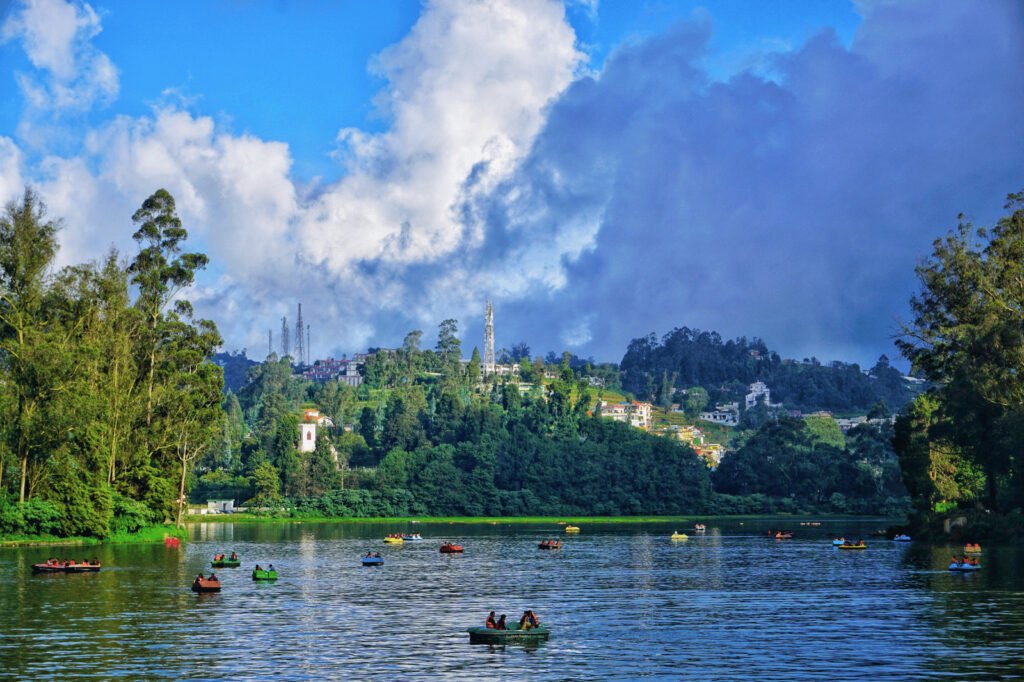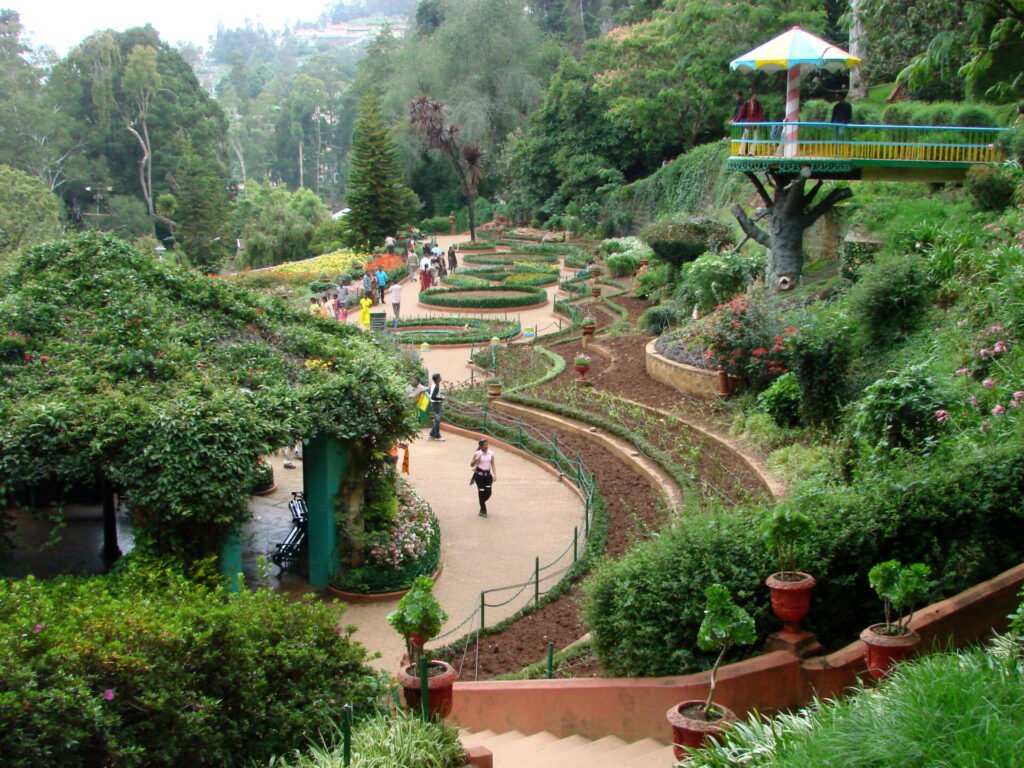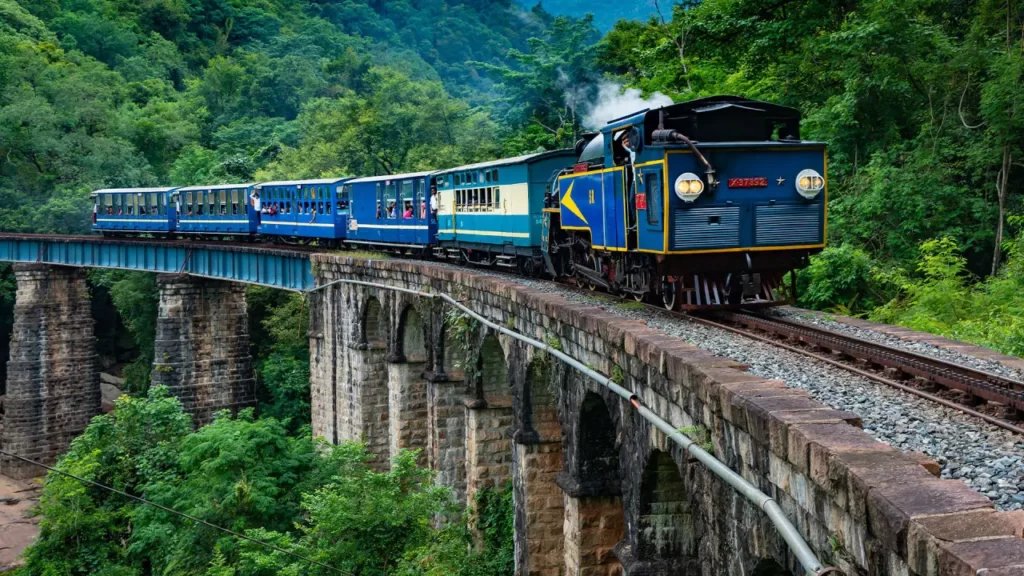Spill The Tea and Explore the Magic of Ooty. Read On to Know More About This Hill-station.
Pavani Mantripragada
January18, 2023. 4 minute Read
Remember the iconic Shah Rukh Khan song Chhaiya-Chhaiya from Dil Se? The dance on top of the train? Okay, what about the summer camp area from Kuch Kuch Hota Hai? Or the pine forests in Barfi?
Ooty, a popular hill station, located at Nilgiris district of Tamil Nadu, was a popular location for shooting for a long time. It is known for its spectacular greenery, which attracts many Bollywood directors to shoot the movie in various places of Ooty.
The small hill station in Tamil Nadu is one of the most beautiful towns in India. It is set around the Nilgiri Hills and is widely known as the ‘Queen of Hill Stations.’ It was the Summer capital of the Madras Presidency.

From Being A Tribal Area To Becoming Queen of Hill Station
Ooty was once called Ottakal Mandu. It means Village of Huts.
Ooty was home to the tribal population of the Toda, Kota, Irula, and Kurumba communities. All these communities primarily relied on agriculture. Later, during the British Period, they changed their profession to Udhagamandalam. But it was still hard for them to pronounce the name, hence popularly known as Ooty (from Ottakal to Udhaga to Ootcal to Ooty).
Ooty had been a part of many dynasties. From Satavahanas to Wodeyars. They were all carefree within the mountains, having been protected in their lands by the Kings. Later, Tipu Sultan captured the hills forcefully, and later, he surrendered them to the British.
When John Sullivan, the governor of Coimbatore, came to Ooty, he described it as “… it resembles Switzerland, more than any country of Europe… the hills, beautifully wooded and fine strong spring, with running water in every valley.”
Such beauty of Ooty had brought them to create several buildings and leisure homes in Ooty.
And later, Ooty became one of the most beautiful Hill Stations in India.
Tea Plantations of Ooty
We all know that the origin of Tea is in China. Through the silk route, Tea traveled to India and Japan. The Chinese word for Tea was Cha; hence, we call it Chai in India.
The Tea had then come to the hands of the East India Company, which took it back to Britain. Soon, Tea became a hot commodity in Britain. The demand for Tea rose. At first, they had a monopoly on Tea in China and hence only cared a little for Tea in India. But in 1833, they took a chance with India when they lost that monopoly. Tea was growing in the wild jungles of Assam. They cleared the forest for commercial tea plantations.

Indians can hardly live without their Chai
The weather in Southern India was so fantastic for coffee, so the British decided to take a chance with the commercial tea plantation. Tea plantations had begun in Ooty in the 1840s. It started in Deobatta, which is today known as Ooty Tea Estate. It is 200-300 acres of land where Tea is grown. Later, they expanded it to Conoor, now Conoor Tea Estate.
They needed transport when the Tea had grown wonderfully within Ooty and Conoor. Hence, they created the Nilgiri Railways. The Nilgiri Railways connected Ooty, Coonoor, and Mettupalayam. Later, a special train, The Tea Garden Express, departs from Mettupalayam to Cochin, which only transports Tea. From Cochin, then it gets transported to other countries of the world.
Today, Tea plantations are incredibly famous in Ooty. It is a beautiful sight to visit. The cool weather is excellent for the cultivation of Tea. The fertile lands of Nilgiri Hills prove to be a perfect choice. The Ooty Tea Estate has a Tea Museum which you must visit. They even show the method of the cultivation of Tea—the history of Tea itself.
35% of Exports of Tea from India are from the Nilgiri Region. 80% of the cultivable land in Ooty grows Tea. So, a large section of Tea grown in south India is from Ooty, Coonoor, and Mettupalayam regions. It accounts for about Rs. 830 Crores.

Beautiful Flower Gardens Of Ooty
Ooty’s beautiful scenic destination was such a hit that it brought several people worldwide to see it. The first gardens were around 1848 at the lower peak of Doddabetta Hills.
Remember learning about terrace-style agriculture in your Geography books? Today, terrace-style agriculture is one of the most famous gardens in Ooty, The Ooty Botanical Garden. The Ooty Botanical Garden garden follows the same pattern. It is across 55 acres; and is divided into six regions in a stepwise manner. The gardens are beautiful, with various varieties of flora grown and maintained.
One of these regions is called Italian Gardens. Italian Prisoners of War built them during World War I.
When tourism around the Garden began gaining a peak, the government of India opened The Rose Garden in 1995. This Garden grows roses. You can find every color and every species of Rose you can find them in this Garden.
You’d miss anything but not the beautiful gardens of Ooty. The other two gardens you should notice are Sims Park and Battery Park.

The Toy Train
Nilgiri Mountain Railways are one of India’s only trains that run on toothed railway tracks. This UNESCO World Heritage Site is the oldest mountain railway in India.
It runs on a steam locomotive engine. The engines are built in Switzerland and imported to India.
The train’s total trip length is 46 kilometers, covering the beautiful attractions between Mettupalayam and Ooty. This train tour visits Ooty Lake, Botanical Gardens, Pykara Falls, Madumalai Wildlife Sanctuary, Tea Museum, Sims Park, and Black Thunder Water Theme Park, among other places. Interestingly, passengers on the train can experience nearly 250 bridges, 208 curves, and 16 tunnels.
This toy train ride is an excellent way to see Ooty’s beautiful greenery and natural attractions, dubbed “the Queen of Hill Stations.”
Subscribe to new post
The One Liner
Useful Links
Order Related Queries
Useful Links
Order Related Queries


